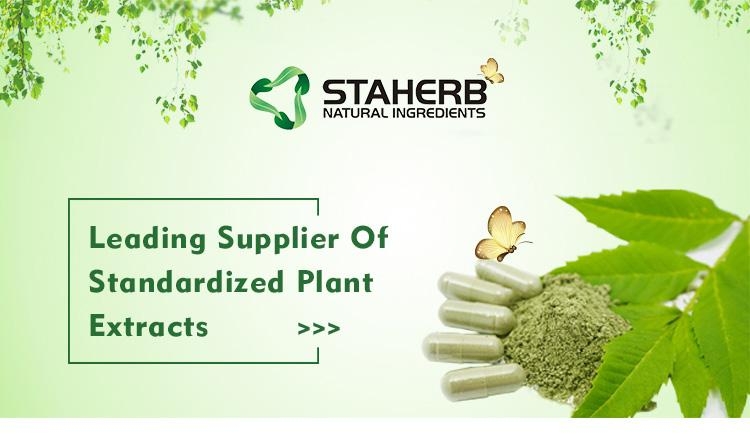
迷迭香提取物熊果酸
品名:迷迭香提取物熊果酸
颜色:棕色到白色粉末
有效成分:熊果酸
植物来源:Rosmarinus officinalis L
CAS号.:80225-53-2
分子式:C18H16O8
分子量:360.33
规格:2-98%
检测方式:HPLC
熊果酸的功能
熊果酸(Ursolic Acid )是一种天然的化合物,可以在许多水果和植物中找到它,例如苹果、罗勒、越桔、蔓越莓、接骨木、薄荷、迷迭香、薰衣草、牛至、百里香、山楂和西梅等,它用于化妆品和个人护理品中是因为其具有抗衰老和消炎属性。根据 Ursolicare.com,熊果酸具有消炎、抗微生物、抗细菌、抗真菌属性,不仅能够防止皮肤和护肤品中的细菌和真菌的生长,还能够帮助伤口愈合。熊果酸总所周知,可以预防环氧合酶(cyclooxygenase )和脂肪氧化酶(lipoxygenase)以及加重皮肤炎症的酶的形成。
熊果酸也被认为可以改善皮肤健康,在头发表面形成保护膜,就像水果或者植物上发现的蜡质防护膜一样。根据 Naringin.net,它被用于“治疗皮肤光老化,因为它可以抑制皱纹和老年斑的出现,恢复皮肤的胶原蛋白束结构和弹性。熊果酸可以抑制皮肤中弹性蛋白酶的活性,从而防止这种类型的酶破坏结构蛋白。”
熊果酸还被认为是一种天然的治疗各种癌症的成分,特别是皮肤癌,因为它可以防止肿瘤生长。
产品详询:13657416805

参考文献:
1.Wu JW, Lee M-H, Ho C-T, Chang SS (1982) Elucidation of the chemical structures of natural antioxidants from rosemary. J Am Oil Chem Soc 59:339–345
-
2.Fischer C (1992) Phenolic compounds in spices. In: Ho C-T, Lee CY, Huang M-T (eds) Phenolic compounds in food and their effects on health I: Analysis, occurrence, and chemistry, chapt 9, The American Society Symposium series 546, Washington DC, pp 118–129
-
3.Nakatani N (1992) Natural antioxidants from spices. In: Huang MT, Ho C-T, Lee CY (eds) Phenolic compounds in food and their effects on health II: Antioxidants and cancer prevention, chapt 7, The American Chemical Society Symposium series 546, pp 72–86
-
4.Nakatani N, Inatani R (1984) Two antioxidative diterpenes from rosemary (Rosmarinus officinalis L.) and a revised structure for rosmanol. Agri Biol Chem 48:2081–2085
-
5.Ito N, Fukushima S, Hagiwara A, Shibata M, Ogiso T (1983) Carcinogenicity of butylated hydroxyanisole in F344 rats. J Natl Cancer Inst 70:343–352
-
6.Witschi HR, Morse CC (1983) Enhancement of lung tumor formation in mice by dietary butylated hydroxyltoluene: dose-time relationships and cell kinetics. J Natl Cancer Inst 71:859–865
-
7.Huang M-T, Ho C-T, Wang ZY, Ferraro T, Lou Y-R, Stauber K, Ma W, Georgiadis C, Laskin JD, Conney AH (1994) Inhibition of skin tumorigenesis by rosemary and its constituents carnosol and ursolic acid. Cancer Res 54:701–708
-
8.Huang M-T, Smart RC, Wong C-Q, Conney AH (1988) Inhibitory effect of curcumin, chlorogenic acid, caffeic acid, and ferulic acid on tumor promotion in mouse skin by 12-O-tetra-decanoylphorbol-13-acetate. Cancer Res 48:5941–5946
-
9.Wattenberg LW (1987) Inhibitory effects of benzyl isothiocyanate administered shortly before dimethylnitrosamine or benzo[a]pyrene on pulmonary and forestomach neoplasia in A/J mice. Carcinogenesis 8:1971–1973
-
10.Deschner EE, Ruperto J, Wong G, Newmark HL (1991) Quercetin and rutin as inhibitors of azoxymethanol-induced colonic neoplasia. Carcinogenesis 12:1193–1196
-
11.Ho C-T, Ferraro T, Chen Q, Rosen RT, Huang M-T (1994) Phytochemicals in teas and rosemary and their cancer-preventive properties. In: Ho CT, Osawa T, Huang M-T, Rosen RT (eds), Food phytochemicals for cancer prevention II: Teas, spices, and herbs. The American Chemical Society Symposium series 547, Washington DC, pp 2–19
-
12.Singletary KW, Nelshoppen JM (1991) Inhibition of 7,12-dimethylbenz[a]anthracene (DMBA)-induced mammary tumorigenesis and in vivo formation of mammary DMBA-DNA adducts by rosemary extract. Cancer Lett 60:169–175
-
13.Offord EA, Mace K, Ruffieux C, Malnoe A, Pfeifer, AMA (1995) Rosemary components inhibit benzo[a]pyrene-induced genotoxicity in human bronchial cells. Carcinogenesis 16:2057–2062
-
14.Hirota H, Mori T, Yoshida M, Iriye R (1990) Suppression of tumor promoter-induced inflammation of mouse ear by ursolic acid and 4,4-dimethylcholestane derivatives. Agr Biol Chem 54:1073–1975
-
15.Ohigashi H, Takmura H, Koshimizu K, Tokuda H, Ito Y (1986) Search for possible antitumor promoters by inhibition of 12-O-tetradecanoylphorbol-13-acetate Epstein-Barr virus activation; ursolic acid and oleanolic acid from an anti-inflammatory Chinese medicinal plant, Glechoma hederaceae L. Cancer Lett 30:143–151
